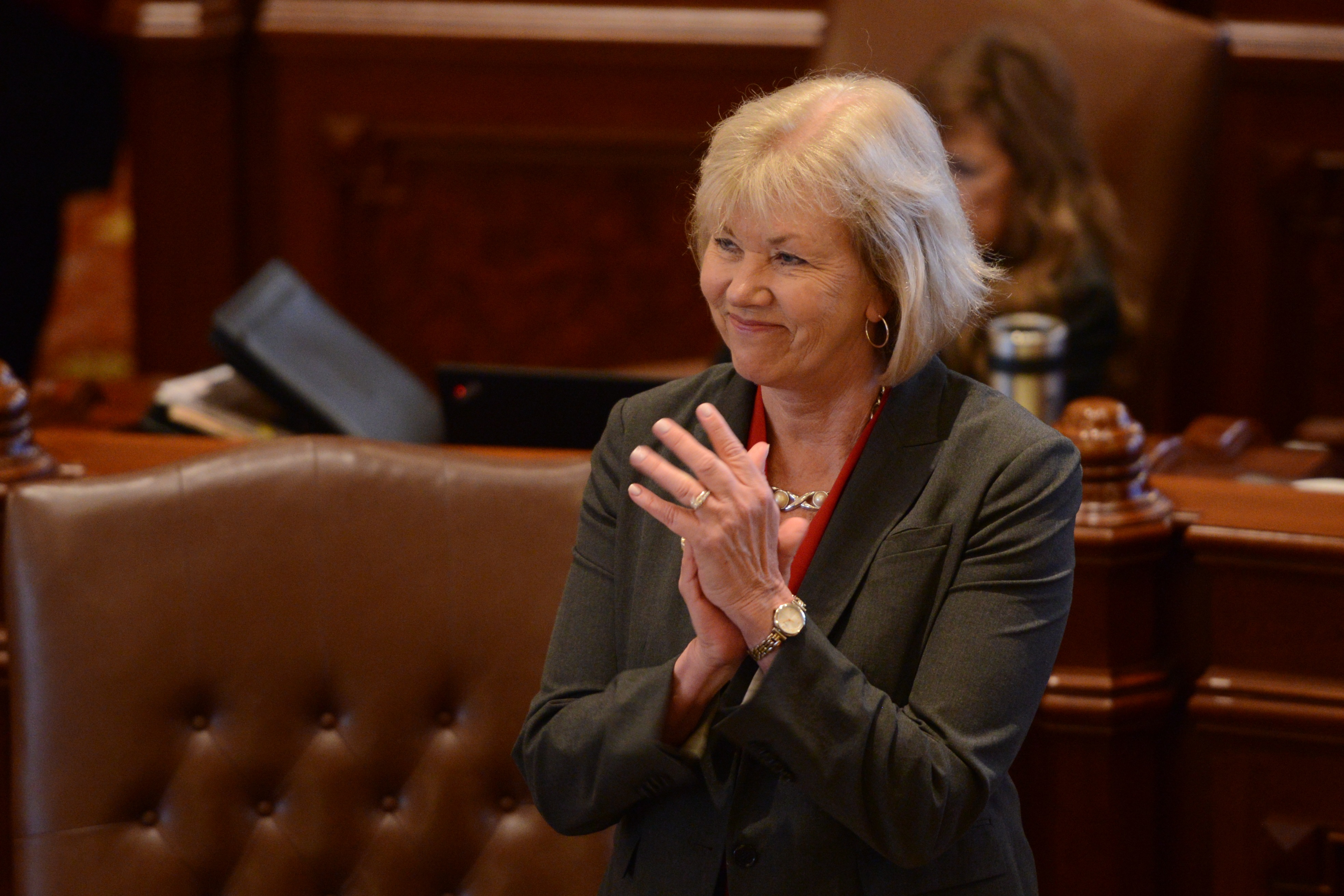- Details
- Category: Vote-by-mail
DEERFIELD — As members of the General Assembly have arrived back to Springfield, State Senator Julie Morrison (D-Lake Forest) is urging her colleagues to take up her bill, a package that would expand the state’s vote-by-mail program for the November election among other changes related to elections.

“People should not have to worry about their health and safety when exercising their right to vote,” Morrison said. “If people don’t feel safe going to restaurants, they won’t feel safe standing in line to cast their vote.”
Illinoisans would have more options to forego traditional polling places and cast their ballots from the safety of their homes during the November 2020 election under a measure sponsored by Morrison. She would like to see everyone who has voted in the last two years receive a ballot, which would then be returned to the county elections office and counted on Election Day.
This would not preclude in-person voting opportunities on and before Election Day.
“No one knows what this pandemic will look like come fall,” Morrison said. “It is imperative we give people more options to exercise their right to vote during this unprecedented time.”
Leading up to her return to Springfield, Morrison spent several weeks speaking with stakeholders, organizations and experts about the proposal outlined in part of Senate Bill 1863 — a package of elections-related measures.
- Details
- Category: Vote-by-mail
DEERFIELD —The 2020 election is less than six months away, leaving people across the state worried it might not be safe to head to the ballot box. Under a proposal spearheaded by State Senator Julie Morrison (D-Lake Forest), every registered voter would be mailed a ballot they could complete from the comfort and safety of their own home.

“People should not have to worry about their health and safety when exercising their right to vote,” Morrison said. “I want to give voters more accessibility to have their voice heard — especially at a time when so many are relying on their elected officials for help.”
The measure will expand Illinois’ current vote-by-mail program. Illinoisans would have the option to forego traditional polling places and cast their ballot from the comfort of their home during the November 2020 election. Each registered voter would be mailed a ballot, which would then be returned to the county elections office and counted on Election Day.
This does not preclude in-person voting opportunities on and/or before Election Day.
“According to the governor’s five-phase proposal, Illinoisans could still have quite a bit of time before they will be able to safely congregate in large groups,” Morrison said. “If people don’t feel safe going to gatherings or restaurants, they won’t feel safe standing in line to cast their vote.”
Morrison has spent the past several weeks speaking with stakeholders, organizations and experts about her proposal. It will be read into the record when lawmakers return to Springfield.
At this time, a date is not set for the return.
- Details
- Category: Vote-by-mail
SPRINGFIELD — As Illinois’ date to choose the nominees for a new U.S. president at the ballot box was on the horizon, the worry of low voter turnout due to the coronavirus pandemic loomed in the background.
 “Illinoisans had to choose between keeping themselves healthy or casting their vote,” State Senator Julie Morrison (D-Lake Forest) said.
“Illinoisans had to choose between keeping themselves healthy or casting their vote,” State Senator Julie Morrison (D-Lake Forest) said.
That worry turned into a reality Tuesday, after some counties throughout the state saw turnouts 20% lower than during previous presidential primaries. In Sangamon County, the turnout was 22.2% — before counting mail-in ballots — compared to the 43.4% turnout in 2016.
The case was similar in Chicago, where the turnout was only about 35%. Suburban Cook and the collar counties saw the same truncated numbers.
“People simply didn’t want to risk going out and catching the virus,” Morrison said. “Others were willing to take the chance but didn’t know where their polling place was due to last minute changes. We wouldn’t have seen low turnouts if more people could vote from the comfort and safety of their own homes.”
Senator Morrison (D-Lake Forest) will soon file a measure to further expand Illinois’ vote-by-mail program. Illinoisans would have the option to forego traditional polling places and cast their ballot from the comfort of their home. Under the proposal, each registered voter would be mailed a ballot, which would then be returned to the county elections office and counted on Election Day.
However, this does not preclude in-person voting opportunities on and/or before Election Day.
Morrison’s vote-by-mail measure will be based on similar protocols in Oregon, Colorado and Washington state.
Washington — which is home of one of the largest coronavirus outbreaks in the country — held its primary a week before Illinois. Yet, because all its voting is done by mail, people were able to cast their ballot without putting their health and safety in jeopardy.
“The situation we are seeing throughout the country during one of the most important elections to date is further proof it is time for Illinois to expand its vote-by-mail program,” Morrison said. “It adds simplicity to people’s right to vote and will boost turnout numbers.”
According to a 2016 study of Colorado, funded by the Pew Charitable Trusts and published by the National Conference of State Legislators, because of convenience, turnout increases. Statewide turnout in Colorado grew from 51.7% in 2010 to 54.7% in 2014 after implementing vote-by-mail.
The bill will be read into the record when legislators return to Springfield.
Page 3 of 3




